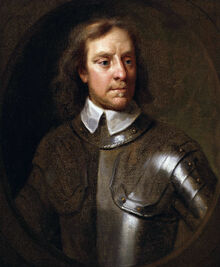In the 1650s England stood at a crossroads between its monarchical past and its republican future under the rule of Oliver Cromwell. In OTL Cromwell took the office of Lord Protector in 1653 and from there lead England's only real experiment with republicanism to a path of religious radicalism and ruin that required the return of the future King Charles II to restore order. Although England wasn't doomed to the return of monarchy at the outset of the Protectorate, the ascension of Cromwell's son Richard to the position of Lord Protector and the failure of several military leaders to keep order required such a return. However, what if

Oliver Cromwell, the First Lord Protector of England, serving from 1653 to 1669.
Richard hadn't been given such a role that he lacked the basic skills for? Even more so, what if Cromwell had never been sent down the path of religious radicalism and disjointed rule that began to classify his time as Lord Protector? This timeline will explore just such a possibility and the effects that this will have on both England, Europe, and the rest of the world. A timeline where Cromwell will become known as "Humble Lord Ironsides," one of England's most forward-thinking leaders and legendary statesman.
Points of Divergence
In 1654, Cromwell is entering his second year as Lord Protector of the Commonwealth of England, Scotland, and Ireland. He has assembled in Portsmouth Harbour, on England's southern shore, an impressive fleet under William Penn and Robert Venables with a force of 3,000 Marines whose mission is to sail to the West Indies and capture the Spanish-ruled island of Hispaniola. The plan to invade Hispaniola had been influenced by tales of the adventures of Sir Francis Drake and Walter Raleigh and would later become the basis for a pragmatic alliance with Catholic France. However, just as the fleet was preparing to sail, a series of storms began to form around Southern England that would soon last for a couple weeks. Cromwell took this as a sign of potential defeat if he asked the fleet to sail under such conditions and ordered the fleet to be reinforced to almost 4,000 men with an additional regiment of artillery.

The English fleet under Penn and Venables en route to Hispaniola.
The investment would eventually pay off for the English. When the English Marines arrived in Hispaniola, they found the colonial capital of Santo Domingo more heavily fortified than they had expected due to Dutch attempts on the city some years before. In April of 1655 the city fell to Penn and Venables' forces and the next month their soldiers secured Jamaica, the casus belli of the conflict. Over the next five years a war would continue between the English and the Spanish despite a great series of domestic furor in England in this time. The war would end in 1660 with a Treaty signed in Madrid, the Spanish capital. That would hand the Commonwealth of England not only Hispaniola, Jamaica, and the Cayman Islands, but also European territory in Dunkirk and one of the country's most detested fugitives: the Duke of York, Charles I's son and brother of Charles, the Prince of Wales. In the intervening five years between the capture of Santo Domingo and the Treaty of Madrid, England and its political system would be greatly transformed by the events that set England on its current path of republican government that has launched it from Medieval monarchy to a modern superpower.
Content
Timeline:
- Seventeenth Century
- Eighteenth Century
- Nineteenth Century
- Twentieth Century
- Twenty-first Century
Nations:
- Europe
- North America
- South America
- Africa
- Asia
- Oceania
Wars:
